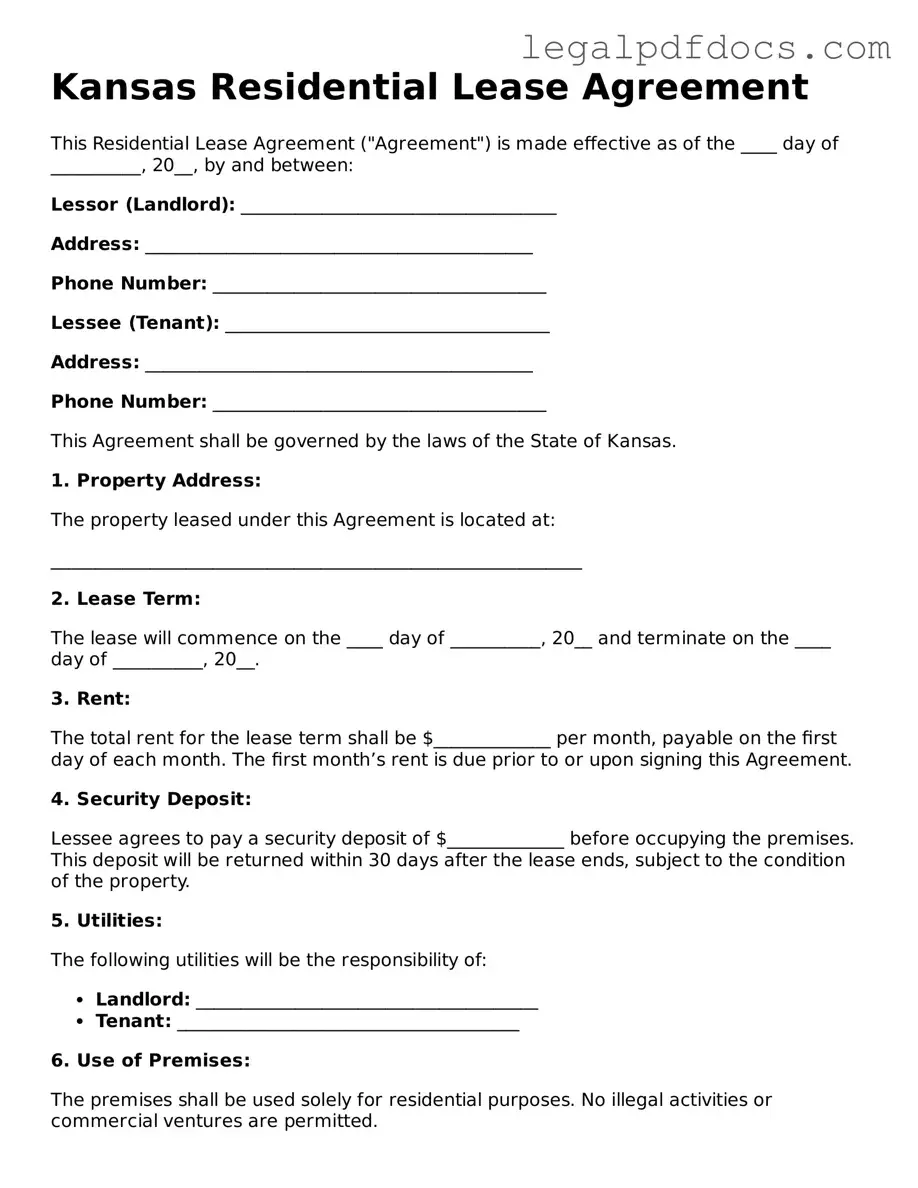Official Residential Lease Agreement Form for Kansas
The Kansas Residential Lease Agreement is a legal document that outlines the terms and conditions between a landlord and tenant for renting residential property in Kansas. This agreement helps ensure that both parties understand their rights and responsibilities, promoting a smooth rental experience. To get started on your lease, fill out the form by clicking the button below.
Open Residential Lease Agreement Editor Here
